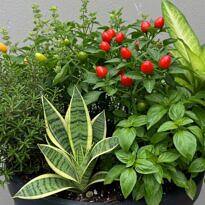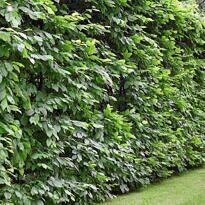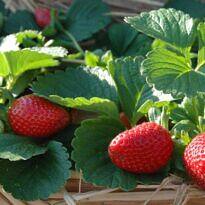
But before we delve into rules about how to prune your bougainvilleas, it’s important to understand a relevant characteristic about this plant: Bougainvilleas adapt to a wide range of climates and can thrive in Mediterranean, tropical, equatorial, subtropical, and other climates. This might not seem noteworthy unless you consider that they respond differently to local climates. Thus, plants growing in tropical areas, with year-round heat and humidity, may bloom at various times, not adhering to a specific season. In subtropical, Mediterranean, and tropical areas with dry winters, they’ll likely bloom in winter, with concentrated and abundant flowering. In other words, bougainvilleas sense environmental variations and adapt, choosing to grow and bloom when conditions are right, rather than following an explicit rule like many other plant species might prefer.

So, when you come across “tips” on bougainvillea pruning, know that the strategy that works for one location may not necessarily work for you. However, if you understand how bougainvilleas function in your region, adapting the timing and pruning technique to your garden’s plant will become much easier, significantly increasing the chances of success. Therefore, observe other bougainvilleas in your neighborhood. Note the flowering period of each one and notice variations according to the species and variety of the plant.
Principles of Bougainvillea Pruning
1. Can it be pruned in winter like other shrubs?
Pruning your bougainvillea in autumn or winter is not a good idea, especially if you live in regions with very cold winters, like southern Brazil. It’s crucial to consider this principle because each pruning stimulates new growth in the plant, and the last thing you want is to see new shoots burned due to cold or frost. Wait until after the last frost to prune. However, if your bougainvillea grows from the Midwest to the north, winter won’t be a bad time. But remember to supplement new growth with water, as ample watering is essential for growth. Otherwise, instead of being frost-damaged, the new shoots might wither and dry due to drought.
2. What’s the ideal frequency of bougainvillea pruning?
Just as pruning timing is influenced by the climate where the plant grows, the frequency will be as well. Plants cultivated in hot and sunny regions will need more frequent pruning as they’ll have more vigorous and constant growth. Pruning your bougainvillea 4 or 5 times a year in these situations won’t be uncommon. However, plants in areas with distinct winters and cold temperatures tend to go dormant, with many even losing their leaves, similar to deciduous trees. In these cases, pruning is reduced to two or three times a year, during periods when the plant is active—namely, spring, summer, and autumn.

3. Can I prune during flowering?
Avoid pruning the plant just before or during flowering. Bougainvillea blooms at the tips of new branches, so if you prune the branches just before flowering, it’s likely that the bloom will be compromised. As branches age, small lateral buds emerge and bloom. Pruning stimulates new growth, which ultimately encourages flowering. Furthermore, if your bougainvillea is in bloom, the best thing to do is enjoy the moment and appreciate the flowering before pruning. It’s best to wait until the flowers fade and lose their color before gently pruning.
However, some people contact me worried, saying they can’t prune because the plant keeps blooming. Blessed gardeners in tropical areas! They have a “problem” of abundance. Jokes aside, in this case, pruning can still be done, even if the plant is in bloom. It’s best to do so early in the rainy season and later to control growth and stimulate new blooms.
4. Should pruning be light or drastic?
A light and superficial pruning after each blooming cycle will stimulate new branches and subsequently new blooms. Pruning removes old bracts from the inflorescences, restoring a healthy appearance. Additionally, the plant becomes denser and more beautiful over time. Each correctly pruned branch will sprout two, three, or four new branches, making your plant denser, rounder, and more abundantly flowered.
Deep and drastic pruning can shape and control the plant after a long period of neglect. However, they won’t result in exuberant flowering, so keep that in mind. It’s better to prune more frequently and lightly than to perform a drastic pruning every two years, for instance. Pruning on woody branches stresses the plant, causing it to enter a recovery cycle, producing many long, vigorous, green branches that don’t flower.
5. How to prune for landscape purposes?
Don’t rely solely on pruning to guide your climbing bougainvillea. As these plants are shrub climbers, they require training to climb and ascend properly on supports, as desired. Therefore, pruning is an auxiliary technique for guiding the plant on pergolas, arches, arbors, or walls. The most important part is directing the long branches to the desired location and securing them firmly with wires, ropes, or other materials. It might seem challenging at first, and you might feel like the plant is resisting,
but eventually, it gets used to it and grows in the right direction.
If your bougainvillea has a different role than a climber or informal shrub, be cautious. When aiming for a trimmed hedge, a topiary tree, or a formal shrub with geometric shapes, you must sacrifice flowering, at least exuberant flowering. Unlike azaleas, which benefit from topiary (at the right time), bougainvilleas, despite acquiring the desired shape, will have their flowering seriously compromised with the frequent pruning required for maintenance in this role.
6. Shoots have emerged at the plant’s base, what to do?
Pruning bougainvillea, regardless of its role in your garden, should start when the plant is still a young sapling. Shrubs and climbers should be trained to have multiple stems from the base, providing strong support, robustness, and a fuller, more compact appearance in the future. To achieve this, break the apical dominance by pruning the main stem of young saplings. Naturally, the plant will develop new branches that can become main stems in the future.
If you want to shape it like a small tree, follow the opposite approach. Keep the plant with only one stem and prune it when it reaches the desired height for branching. Always remove lateral branches and those emerging from the base before that point. In this case, you’ll need to offer support in the early stages, such as a wooden, metal, or concrete post to support the plant. The stem will only thicken at the base when the plant is larger. Until then, it’s important for it to have support to bear its weight. Even after proper formation, occasional branches might emerge at the base of the plant, which should always be pruned to maintain its shape.

7. Should I fertilize after pruning?
Yes! Don’t forget to fertilize. Each time you prune the plant, whether it’s a deep or superficial cut, you remove many nutrients that the plant has spent time and energy accumulating. So, whenever you prune, fertilize afterward. For abundant flowering and controlled growth, the best fertilizers are those rich in phosphorus and potassium, and low in nitrogen, such as NPK 04.14.10. Nitrogen-rich fertilizers promote the growth of an intense green mass that’s difficult to control, while phosphorus and potassium are essential for flowering. Also, remember to supplement with other macronutrients like calcium, magnesium, and sulfur, as well as micronutrients. A mix of dolomitic limestone and organic matter usually meets these needs.
8. How to prune to maintain plant health?
Perform cleaning pruning anytime. Don’t wait for the right season to remove diseased branches, parts infested by pests, dry and dead branches, thorny growth that doesn’t flower. Cleaning the plant helps maintain its health and enhances its appearance. If you delay, it might be too late and the disease could have spread throughout the plant. Disinfect your pruning shears after cutting any suspicious branches, preferably with alcohol to avoid affecting the tool’s tempering and edge.
Extra Tip:
Choose your pruning tools carefully. High-quality stainless steel carbon tools will last for many years without losing their edge, rusting, or breaking. Use a saw for pruning woody branches to avoid straining your pruning shears. For distant branches, use loppers with long handles. Keep your tools well lubricated and clean after each pruning operation. Always sterilize between plants. And remember, bougainvilleas have thorns, so use long and sturdy gloves when handling them.







